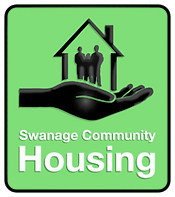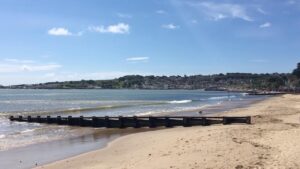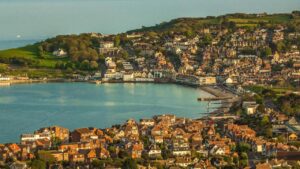4th January 2024
16:00-20:00
Housing on Land at Washpond Lane and Ulwell Road
Swanage Community Land Trust is proposing to develop our first site of much needed low cost rent houses for key workers and local people
Come and meet the Trustees (and see what it is all about)at:
Meeting Room
All Saints Church
Ulwell Road
Swanage
BH19 1LL
Frequently asked questions
Why do we need affordable housing in Swanage?
Dorset Council conducted a Swanage Housing Needs Survey in 2016. Over a thousand households responded, with 89% favouring increasing the provision of local affordable housing, particularly for rent. Respondents reported that private rented housing is scarce, insecure and unaffordable, with seventy seven saying that family members had had to move away in the past 5 years because of the cost of housing here.
How many households are waiting on Dorset Council’s list with a local connection to Swanage?
At September 2023, there were 191 households with a local connection waiting for a home in Swanage.
A response from Dorset Council in 2020 that addressed length of wait for Purbeck stated: “The length of time a household might wait depends on the area they are applying for… in particular in Purbeck there is hardly any family sized housing.” The same response provided a table with longest waits showing that in Purbeck the wait for a two bed house was up to 29 years.
In the Town Council meeting on 11 December this year, a mum of two from a long-standing Swanage family, both her and her partner work here, the children are settled at school, and the family do not have a car, spoke of her situation. After being offered emergency caravan accommodation at Herston Farm Yards, where the family lived for 9 weeks, they were offered temporary housing in the Town for six months, during which the family are expected to apply for properties across Dorset. There have been no properties in Swanage to apply for. The family don’t know what will happen at the end of 6 months if they haven’t found anywhere.
Hollowing out our community – loss of key workers and staff to help our community thrive
In Dorset Council’s 2016 Housing Needs Survey, the majority of those responding who were themselves in need of housing reported a household income of less than £26,000 a year. Jobs of those responding included Care Support Worker, Health Care Assistant, Paramedic, Teaching Assistant, Plumber, Carpenter, Receptionist and Shop Assistant. Our community hospital struggles to recruit nurses because of housing costs. Friends of the Hospital have offered to subsidise housing costs but found that long rentals do not cover the summer months, when housing is used for lucrative holiday lets.
Again, in the Town Council meeting on 11 December someone who has lived here for many years and works in one of our schools reported her private landlord is selling her home. She cannot find alternative private rented accommodation. The nearest potential home on Dorset Council’s list is in Gillingham.
How is Social Housing provided?
Because local authorities are very restricted in building social housing, one of the ways in which social housing is provided is through community land trusts, which are community-led organisations.
What is a Community Land Trust (CLT)?
Community land trusts – or CLTs – are democratic, non-profit organisations that own and develop land for the benefit of the community. They typically provide genuinely affordable homes, aiming for social rents wherever possible, and sometimes community facilities, for people with a strong local connection.
Who runs a CLT?
They are community organisations run by ordinary people who want to make a difference to their local community, putting control of assets into the hands of local people. Swanage Community Land Trust has been established with the help and support of Swanage Town Council.
Where does a CLT get its land?
CLTs acquire land in a variety of ways. Usually land needs to be bought at a low cost in order to enable the development of affordable homes (if the land price is too high the scheme might not work financially).
Examples of how CLTs acquire land are:
- Land could be bought from a private landowner. This kind of site is sometimes suitable if it is on the edge of a settlement and is a site that can only be developed for affordable homes for local people (an exception site in planning terms).
- Land could be bought at a discount or gifted by a public body like the local authority, or a community minded landowner like a charity if they are in support of the aims of the CLT.
- Land could be bought at a discount or gifted to the CLT by a developer as part of the contribution they must make to the community in their planning agreement (known as a section 106 site).
How does a CLT create affordability?
To create affordability a CLT needs to receive subsidies in one form or another; be it free land and/or financial grants from government, charities or benefactors.
Once housing is built, can it be sold?
Swanage CLT will ensure that homes built in Swanage are permanently and genuinely affordable. Homes are subject to an asset lock preventing their being sold. CLTs such as ours act as long-term stewards of land and the assets for the benefit of the local community, not just for now but for every future occupier.
Why does a CLT partner with a housing association?
Many successful CLTs have partnered with a housing association to help them to deliver the homes that their community needs. Housing Associations are experienced in funding, building and managing affordable homes, so can bring a wealth of experience to a CLT led project and can help community groups to get projects off the ground. They are regulated by the Government through the Regulator of Social Housing. In our case we have chosen to partner with Hastoe Housing Association (www. https://www.hastoe.com) because they have an excellent track record of building small, sustainable schemes in sensitive rural areas such as ours. Swanage CLT is committed to the provision of good quality attractive energy efficient homes on sites that retain natural features wherever possible.
Are you a charity?
We are recognised by HMRC as a charity. This is common for CLTs, and, for example, enables an exemption from VAT, but also subjects CLTs to the strict control of HMRC and the Charity commission.
Why not simply renovate old buildings?
Because CLTs rely on funding from bodies such as Homes England, renovating existing buildings is usually too costly for their funding model. Firstly, the buildings would need to be donated (or funded by donations) and second, older buildings need to be remodelled and brought up to modern environmental standards which is typically much more expensive than building from scratch.
How will neighbours of any proposed sites be consulted? Ulwell Road/Washpond Lane site
We are at a very early stage in terms of the possibility of building affordable housing for local people and key workers on the site on the corner of Ulwell Road and Washpond Lane.
We notified close neighbours of the site about our proposal at the end of November. This letter went to neighbours at James Day Mead, 2 Washpond Lane, 55 Ulwell Road and 58 – 84 Ulwell Road (even numbers). If we have accidentally missed any other close neighbours of the site we sincerely apologise, please let us know be emailing swanagecommunityhousing@gmail.com
We have a consultation drop in event at All Saints Church, 4-8pm on January 4th 2024. Please see attached flyer and please come along and ask any questions you have, we will do our best to respond. Please bear in mind we are not yet at pre-application stage so do not have a clear design to consult about at the moment.
We are committed to consulting site neighbours about any design we subsequently develop and incorporating your feedback where we can do so. Following consultation on any design we would need to apply for planning permission, and neighbours would then be consulted as part of the planning process.



